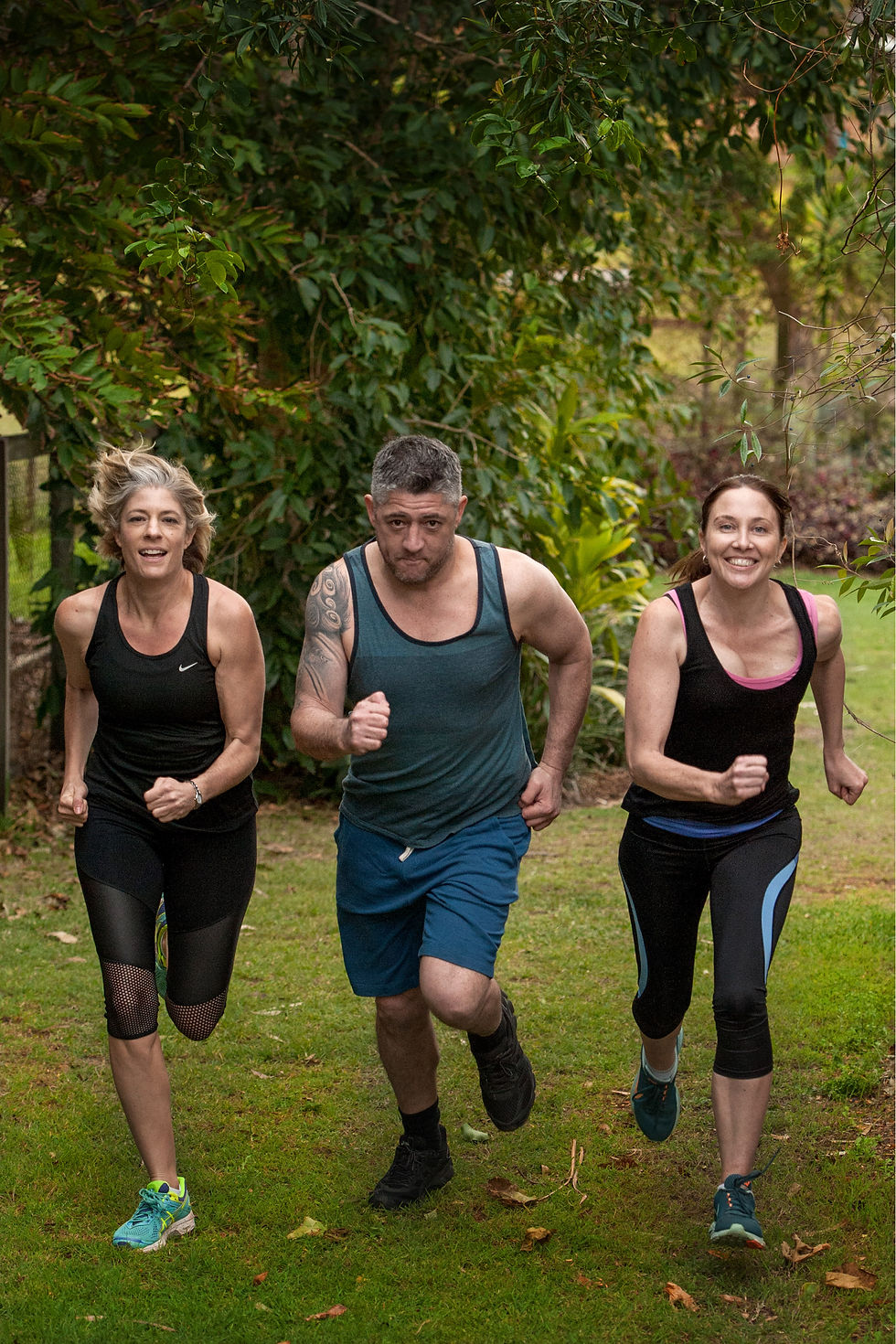Losing it, sensibly
- Jay Buchan
- Sep 5, 2019
- 3 min read

I thought I’d share this in the hope I can simplify some things that could help anyone who feels they could lose a few kilograms (or more). Before we do, just know, that if you feel you need to improve your health, just increasing the amount of movement you do will improve your situation. If you can do a bit every day, that’s best. If you can do a bit more this week than you did last week, then you are on the right track.
The main cause of obesity is energy imbalance.
If you eat more than you burn-off, your weight goes up.
If you burn-off more than you eat – your weight goes down.
Now measuring energy expenditure is not easy, but there are some simple guidelines that provide a rough indicator.
But there are other factors. Including:
Hormones: which can make it harder to lose weight and affect exercise capabilities.
Genetics: 70% of overweight adolescents become overweight adults (80% if both parents are obese).
Environment: If the environment around you promotes high-fat, energy-dense foods (processed food is more likely to fall into these categories, plus the preservatives in processed food can make it more difficult for your body to burn fat) and discourages physical activity?
The good news it is simple to get things heading in the right direction.
You do have to commit to eating better, which is as much psychological as physiological for many. Your GP is best placed to give advice on avenues for assistance if you need a hand there (I still battle chocolate addiction).
Physically the simplest weight management principle is Negative Energy Balance. Burn more calories, consume less energy - chips have a lot more energy and less nutrition than a nude salad (less dressing full of fat and sugar).
One simple way to get a hold on things is to keep a food diary. Write down everything you eat each day. It will soon become clear what you should cut out or reduce and how you can make positive changes.
Nutrition
Eat fruit, vegetables, unsweetened dairy products, lean meats (avoid eating red meat every day or try a meat-free day once a week), nuts, berries, and whole grains (grainy or wholemeal bread is a better option than white as it releases less sugar straight into your system and provides valuable fibre for your gut), instead of processed foods.
Exercise
The other change is to move more – that can be exercise, or just getting more active in your day-to-day existence. Ideally both. The Australian department of Health:https://www1.health.gov.au/internet/main/publishing.nsf/Content/health-pubhlth-strateg-phys-act-guidelinesrecommends 150-300 minutes of moderate intensity physical activity a week (that’s at least 30 minutes a day, five days a week or more; or 50 minutes a day, three days a week). That can be a walk to and from the shops – or with your dog, or with the kids to the park. It can be three sets of push ups, three sets of squats and a 45 second plank in the back yard, or on the lounge room floor in front of the box.
Or you can halve that if it involves high intensity exercise– which is easily recognised as that point at which you feel you are not getting enough air in – relax, it’s healthy. Once you can push through that feeling and operate at a steady state with your lungs working hard, you know you have a good fitness base. Some of the tracks in the Moggill Conservation Reserve off Chalcott Rd, Anstead, will push you into the high intensity zone just walking up them.
Kids should be getting an hour’s physical exercise a day and at least equal that in creative time (when they use their brain to occupy their time, rather than a screen).




Comments